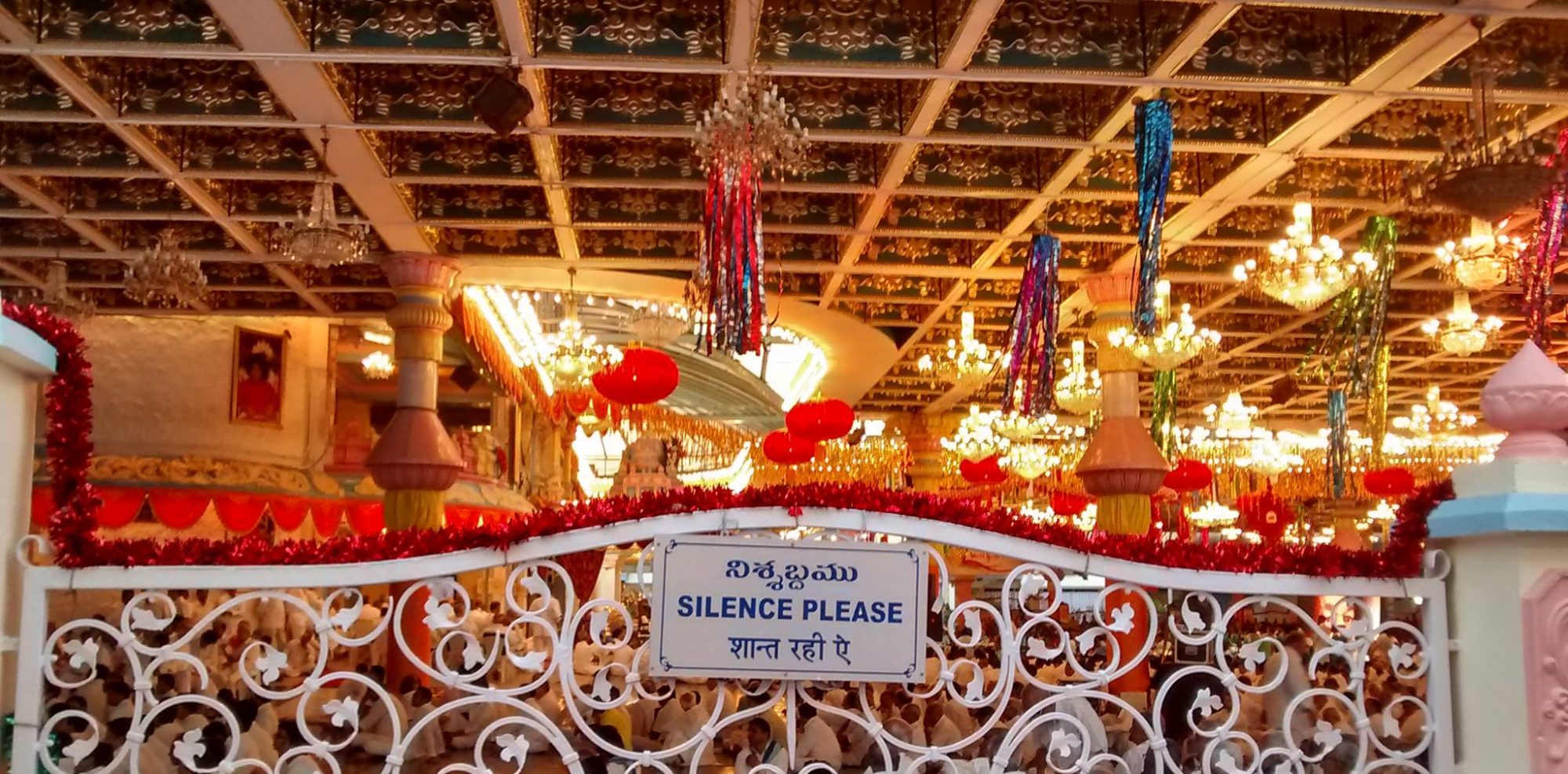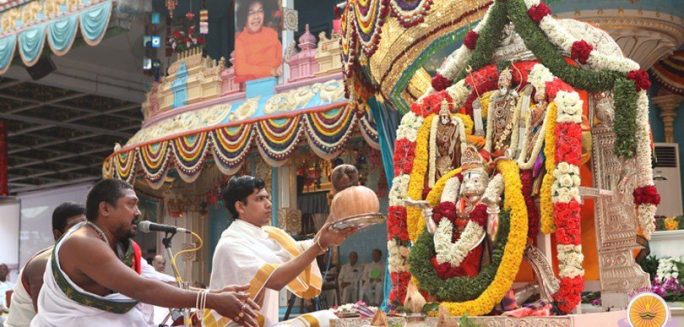Bhagawan’s 87th birthday celebrations commenced in Prasanthi Nilayam on 18 Nov 2012, on a very auspicious note, staging a symbolic celestial marriage of the Divine couple Lord Rama and Mother Sita followed by Rathotsavam.
The program held on a make-shift platform, in front of the Sanctum Sanctorum, commenced at 08:30 in the morning, lasting 80 minutes. Amidst Vedic chanting and to the backdrop music of Nadaswaram, even as the rituals continued with various offerings to the Divine couple, the chief priest went on elaborating the greater significance and purport of the Divine Marriage connecting the same with Sai saga. Upanayanam, sacred thread ceremony of the bridegroom followed by Kanyadanam (giving away the bride) was performed amidst chanting before the final ceremony. The divine marriage ceremony concluded with the tying of Mangala Sutra around the neck of the bride.




You must be logged in to post a comment.